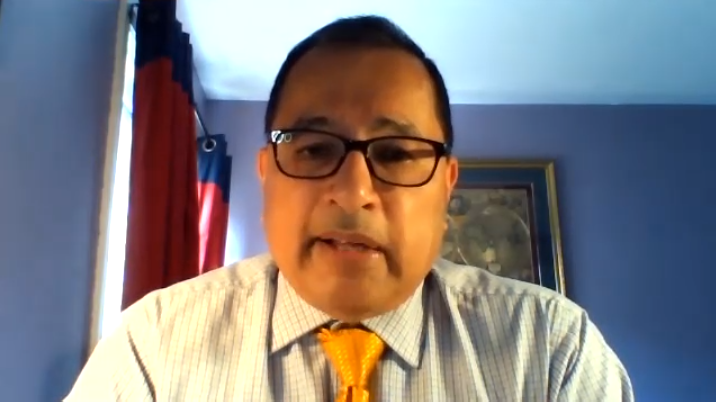York Region’s medical officer of health said we should avoid a fourth wave of COVID-19 based on current trends, though caution is still needed.
Dr. Karim Kurji said trends are positive in York Region and there are no local indicators of a significant rise in the future. He said though modelling in some other regions are indicating an increase in COVID-19 cases in the fall, it should be manageable if the rate of vaccination is high enough.
Kurji said although it depends on the rise of variants around the world, he does not think a fourth wave is coming.
“I am fairly optimistic that the worst is behind us,” Kurji said. “We should be able to keep our numbers low. I think we’ll see a constant daily average of about 10 — or below 10 — cases. Hopefully, with some luck, those numbers will go down close to zero.”
Newmarket has had three days in a row with zero new cases as of July 27. York Region as a whole had a small spike of 28 new cases reported July 27, with a seven-day average of 12 cases and a reproductive number below one for both alpha (0.56) and delta (0.76) variants.
The region also has 81 per cent of its 12 and older population with one dose of the vaccine, and about 71 per cent fully vaccinated, according to Kurji.
But with some other parts of the world experiencing surging cases, Kurji said it is vital for vaccinations to keep up, given the probability of travel-related cases to come. He noted Ontario’s chief medical officer of health has suggested 90 per cent of people will need to be vaccinated across the province to stop the threat of the more contagious delta variant.
“We need to keep on looking over our shoulders at all times. However, our best defence is going to be increasing the vaccination proportion in York Region,” Kurji said.
But reaching that ideal could be a challenge, as first-dose vaccinations have been slow over the past few weeks. Kurji said it takes a lot of effort now to convince the remaining unvaccinated population to get a vaccine, but public health is trying to make it as easy as possible. The public health unit has started doing more pop-up clinics at malls and farmers markets, and is target school-aged youth and their families with clinics.
One target the region is honing on is schools. He said across the region, first doses are around 68 per cent for the 12-17 age group, and second doses are at 47 per cent.
“Those aren’t good numbers,” Kurji said. “We need to get those up.”
Kurji said they hoped malls would be a good place to target youth, but that has not worked out. Instead, public health is preparing pop-up clinics at schools starting Aug. 6, though confirmation on which schools will have clinics is still to come.
Kurji said though we may not need to fear the fourth wave of COVID-19, it is dependent on people continuing to follow public health guidelines.
“We would still need to be careful with respect to not abandoning the masking and physical distancing and the hand-washing practices that we have,” Kurji said. “Those will need to continue for some time.”


